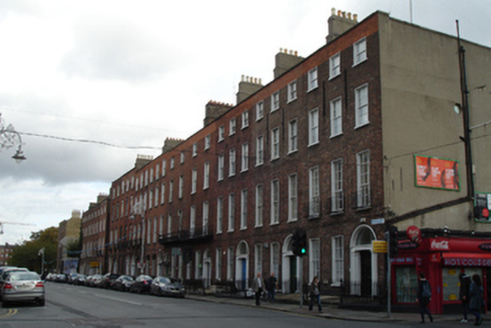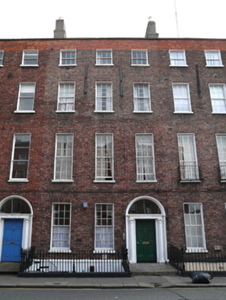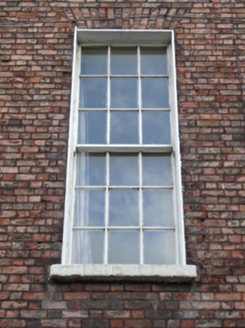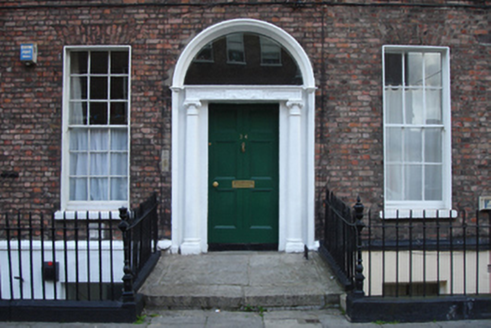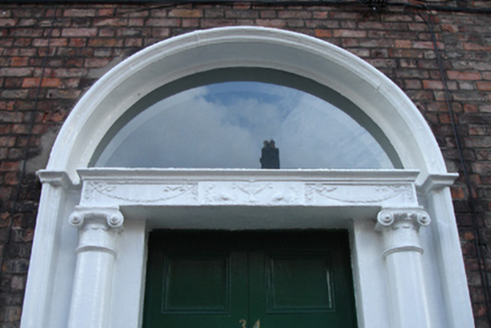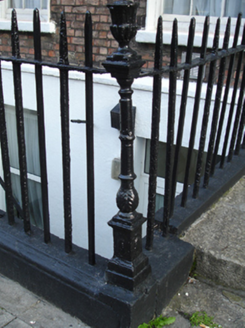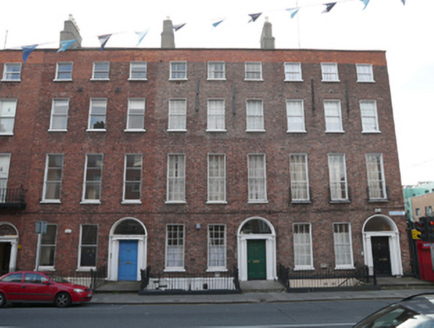Survey Data
Reg No
50010935
Rating
Regional
Categories of Special Interest
Architectural, Artistic
Original Use
House
In Use As
Apartment/flat (converted)
Date
1790 - 1795
Coordinates
315865, 235344
Date Recorded
22/09/2011
Date Updated
--/--/--
Description
Terraced three-bay four-storey house over exposed basement, built c.1792, with full-height bow to rear. Now in multiple occupancy. M-profile slate roof set behind rebuilt parapet wall with granite coping. Two stepped rendered chimneystacks to north party wall with clay pots. Red brick walls laid in Flemish bond to painted granite plinth course over painted rendered walls to basement level. Cement rendered walls to rear elevation. Gauged brick flat-arched window openings with painted granite sills, patent rendered reveals and replacement timber sliding sash windows throughout, nine-over-nine pane to ground, first and second floors, three-over-three pane to top floor and replacement uPVC to basement. Bowed sash windows to rear with round-headed six-over-six pane window to stairs. rear also has other six and nine-over-six pane windows and some replacement uPVC windows. Round-headed door opening with moulded masonry surround and advanced painted masonry Ionic doorcase. Flat-panelled timber door flanked by engaged Ionic columns on plinth bases supporting embellished lintel cornice and plain fanlight. Door opens onto granite platform, bridging basement area, and single granite step enclosed by wrought-iron railing and cast-iron corner posts. Matching iron railing set on concrete plinth wall encloses basement area with concrete steps giving access. Rubble stone and cement rendered wall with galvanised steel gates provide access to shed at rear of property, opening onto Bath Lane at rear.
Appraisal
Forming part of a terrace and built as one of three similar houses, this example conforms to plot size and parapet height as laid out in 1792. It retains its original classical-style doorcase, fenestration pattern and a bow to the rear. No. 34 plays an important role in maintaining the intact appearance of the streetscape. The retention of timber sash windows, and of the stone and metal features and details to the entrance and basement area enhances the building and its setting. This building contributes significantly to the intactness of the streetscape.
